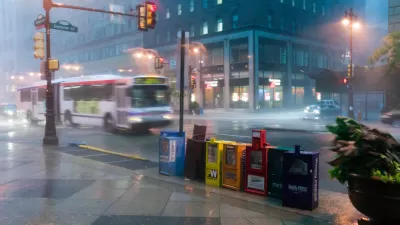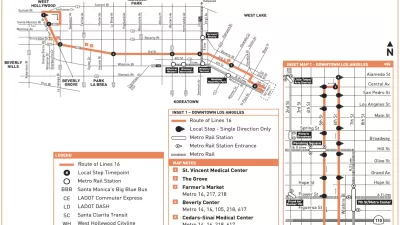The definition of "On Time" varies from transit system to transit system, making comparisons difficult. When compared using the same standards, a more accurate portrait of transit performance emerges.

A recent post on the TransitCenter website catches transit systems moving the goal posts when it comes to measuring on-time performance. Transit officials set their own performance standards, without referencing any national standard, and can change those standards when its expedient to do so.
"Baltimore’s MTA recently came under fire by the Baltimore Sun and advocates for doing just that last year, after it boasted of improving its on time performance following the 2017 redesign of the bus network in Baltimore," according to post.
To cut through the fog of self-serving arbitrariness, the team at TransitCenter chose one universal standard, "[using] publicly available open data to look at 2018 transit agency performance, and picked an (ambitious) standard used by SFMTA: 'On Time' definition of 1 minute early, 4 minutes late."
Once the standard is set to a universal scale, the on-time performance of most systems declines, but a few trends in quality performance also emerge. "The systems that rise to the top tend to be in less congested cities (no surprise there – congestion is the primary source of bus delays). The top three cities for reliability saw smaller ridership losses on their bus system from 2016-2017 than the national average," according to the article.
FULL STORY: Your Bus Is On Time. What Does That Even Mean?

Planetizen Federal Action Tracker
A weekly monitor of how Trump’s orders and actions are impacting planners and planning in America.

San Francisco's School District Spent $105M To Build Affordable Housing for Teachers — And That's Just the Beginning
SFUSD joins a growing list of school districts using their land holdings to address housing affordability challenges faced by their own employees.

Can We Please Give Communities the Design They Deserve?
Often an afterthought, graphic design impacts everything from how we navigate a city to how we feel about it. One designer argues: the people deserve better.

The EV “Charging Divide” Plaguing Rural America
With “the deck stacked” against rural areas, will the great electric American road trip ever be a reality?

Judge Halts Brooklyn Bike Lane Removal
Lawyers must prove the city was not acting “arbitrarily, capriciously, and illegally” in ordering the hasty removal.

Engineers Gave America's Roads an Almost Failing Grade — Why Aren't We Fixing Them?
With over a trillion dollars spent on roads that are still falling apart, advocates propose a new “fix it first” framework.
Urban Design for Planners 1: Software Tools
This six-course series explores essential urban design concepts using open source software and equips planners with the tools they need to participate fully in the urban design process.
Planning for Universal Design
Learn the tools for implementing Universal Design in planning regulations.
Borough of Carlisle
Smith Gee Studio
City of Camden Redevelopment Agency
City of Astoria
Transportation Research & Education Center (TREC) at Portland State University
City of Camden Redevelopment Agency
Municipality of Princeton (NJ)





























